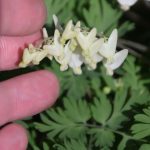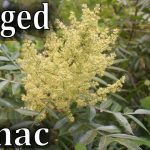The Siberian Honeysuckle, or Amur Honeysuckle, is an invasive species that has been wreaking havoc on native plants in the United States since it was introduced in the 1930s. This plant is easy to identify by its ovate-shaped leaves with smooth margins and a sharp tip at the end. The leaves grow in pairs on opposite sides of the stem, unlike Spicebush which has alternating leaves. The flowers of the Siberian Honeysuckle are similar to those of Japanese Honeysuckle, and come in two colors: white and yellow. This plant grows as a bush or small shrub and is highly invasive, making it important to know how to identify it in order to control its spread.
The Siberian Honeysuckle can be found in many parts of the United States, including the Midwest, Northeast, and Southeast. It is particularly prevalent in wooded areas, along roadsides, and in disturbed habitats. It is able to outcompete native species due to its fast growth rate and ability to tolerate a wide range of conditions. This makes it difficult to control and can lead to significant damage to native plant communities.
In order to prevent the spread of the Siberian Honeysuckle, it is important to be able to recognize it and take steps to remove it from your property. If you find this plant growing on your property, it is important to remove it as soon as possible before it has a chance to spread further. This can be done by digging up the roots or using herbicides. It is also important to avoid planting this species in your garden as it can quickly become invasive and difficult to control.
The Siberian Honeysuckle is a noxious invasive species that has been causing problems for native plants since it was introduced in the 1930s. It is important to be able to recognize this plant and take steps to remove it from your property in order to prevent further spread. With proper identification and removal, we can help protect our native plant communities from this invasive species.



GIPHY App Key not set. Please check settings